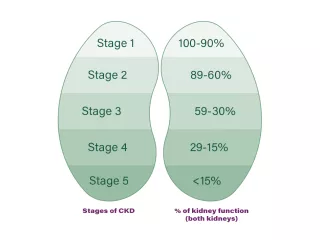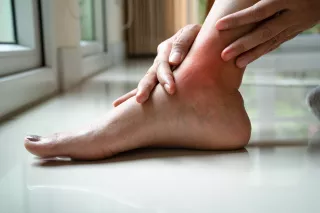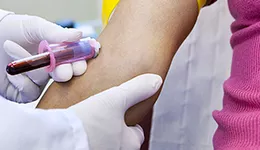
What are the stages of chronic kidney disease (CKD)?
Learn about the stages of CKD
CKD can range from mild to very severe. CKD has no cure. It is a progressive disease, so it can get worse over time if not effectively managed.
The 5 stages of CKD describe the severity of the kidney dysfunction. People can’t tell how bad their CKD is because they often don’t have any symptoms until later stages. The earlier CKD is detected, the better the chance of slowing or stopping its progression.
Defining the stages of CKD
(1) Stage 1 CKD
Description: Although your kidneys have lost some function, they are still able to function almost normally (eGFR > 90 mL/min/1.73m2).
What this means for you: You will probably not notice any symptoms of CKD and can live a normal life. However, you should have regular check-ups to monitor your GFR and manage any other health issues that may affect your kidney functioning.
(2) Stage 2 CKD
Description: Damage has caused mild loss of kidney function (eGFR 60–89 mL/min/1.73m2).
What this means for you: Stage 2 is similar to Stage 1 of CKD; however, the aim is to prevent any further decline in kidney function.
(3) Stage 3 CKD
Description: Damage has caused a moderate loss of kidney function (eGFR: 30–59 mL/min/1.73m2).
What this means for you: You may still not notice symptoms of CKD. You will need your clinician to test regularly for complications and should discuss treatment options with them to prepare for the event that kidney failure requiring renal replacement therapy develops.
(4) Stage 4 CKD
Description: Damage has caused a severe loss of your kidney function (eGFR: 15–29 mL/min/1.73m2).
What this means for you: You may notice symptoms of CKD. You should either be in treatment or have discussed treatment options with your clinician to prepare for the event that kidney failure requiring renal replacement therapy develops.
(5) Stage 5 of CKD
Description: Your kidneys have failed (eGFR ˂ 15 mL/min/1.73m2).
What this means: You will likely notice symptoms of CKD. At this point you will need to move forward with the treatment that you and your clinician have decided is right for you.
Remember that every CKD patient is unique. Not only your GFR but also your age, physical condition, medical history, and lifestyle will factor into your clinician’s treatment recommendation. The treatment choice should always be a joint decision between you and your clinician.
What are the symptoms of CKD?
Healthy kidneys remove excess fluid and waste from your blood. When your kidneys don’t work as well as they are supposed to, excess fluid and waste can build up in your blood and make you feel sick.
In the early stages of kidney disease, many people don’t have any symptoms. Some people don’t know they have CKD until their kidneys fail. Symptoms usually show up later as the disease progresses.




